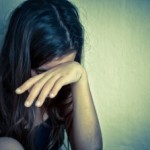
SAD or just sad?
Everyone feels a little melancholy when the days are short and cold. For some people, seasonal change brings with it something more serious than the blues: seasonal affective disorder (SAD), a form of depression that can be debilitating.
And daylight savings time may not help, since darker mornings—in the fall or spring—are particularly difficult for those with SAD.
Mild forms of SAD are believed to affect as many as 20% of people in the United States.
1. Sadness
SAD is a form of depression, and it shares most of the same symptoms. The two most common symptoms of depression are feelings of sadness and hopelessness, and losing interest in activities—such as socializing—that you normally find pleasurable.
If you experience these symptoms every day for at least two weeks, it’s a sign of depression. If you feel this way only during the fall and winter, and if these symptoms disappear during the rest of the year, it may be a sign of SAD.
2. Sleepiness and fatigue
People with SAD tend to feel the need to sleep more during the wintertime—sometimes a lot more. In one study, published in the Journal of Psychosomatic Research in 1994, patients at a SAD clinic averaged about 7.5 hours of sleep in the summer, 8.5 hours in the spring and fall, and nearly 10 hours in the winter.
Just because you’re sleeping more doesn’t mean you’ll feel rested, however. Other research has shown that people with SAD experience more insomnia and sleep disturbances, and are more prone to nodding off at work.
3. Irritability
Anger and irritability are common—yet often overlooked—symptoms of depression and SAD. Research suggests that people with SAD are significantly more irritable than healthy individuals. They may also be more prone to anger than people with regular (nonseasonal) depression.
A 2006 study that compared groups of people with active SAD and regular depression found that more than 40% of the people in the SAD group experienced sudden fits of inappropriate anger, compared to just 29% in the other group. Those with SAD experienced 19 of these “anger attacks” a month, on average.
4. Increased appetite
Like depression in general, SAD can increase appetite in some people. Sixty-five percent of people with the disorder report being hungrier during the colder, darker months.
The voracious appetite that sometimes accompanies SAD may be a biological response to a seasonal drop in serotonin, a neurotransmitter that’s associated with mood and helps to control hunger.
Though it can help you feel better temporarily, eating more—and being cooped up—during the winter can really pack on the pounds: Nearly 75% of people with SAD gain weight.
5. Carb cravings
One of the reasons that people with SAD tend to gain weight is that the disorder can produce a strong craving for complex carbohydrates such as bread and pasta. (In fact, 7 out of 10 people with SAD experience this symptom.)
Gorging on carbohydrates causes the levels of an amino acid called tryptophan to rise in the brain. This in turn causes the release of serotonin, which boosts mood. In effect, people with SAD use carbohydrates as a kind of medication—and a bigger waistline is a common side effect
6. Difficulty concentrating
Depression can make you feel sad and alone, but it also compromises how well your brain works. The condition has been shown to affect a range of mental processes, including concentration, speaking ability, and memory.
A 2007 study in the American Journal of Psychiatry showed that this so-called cognitive impairment can be every bit as bad in people with SAD as it is in people with nonseasonal depression. One woman who participated in the study—whose symptoms qualified for SAD, but not major depression—reported that she was having difficulty remembering names and appointments, and was easily distracted.
7. Loss of interest in sex
Depression doesn’t exactly make you feel sexy. A loss of interest in sex is a common symptom among people with SAD and depression alike.
But this only tends to be true among people who experience SAD in the fall and winter. If the disorder appears in the spring and summer—a much rarer condition sometimes called “summer depression” or “reverse SAD”—some of the symptoms tend to be the opposite of winter SAD. And one of the hallmarks of summer depression is an increased sex drive.
http://www.health.com/health/gallery/0,,20309270_8,00.html

